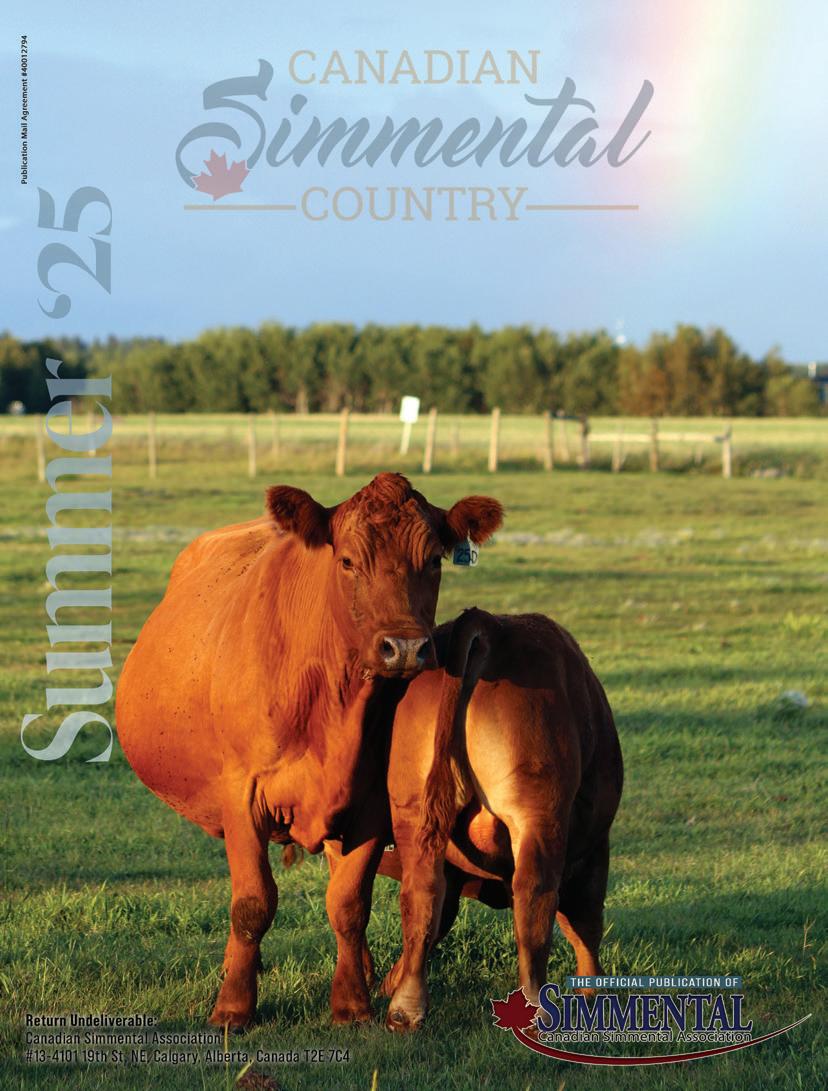
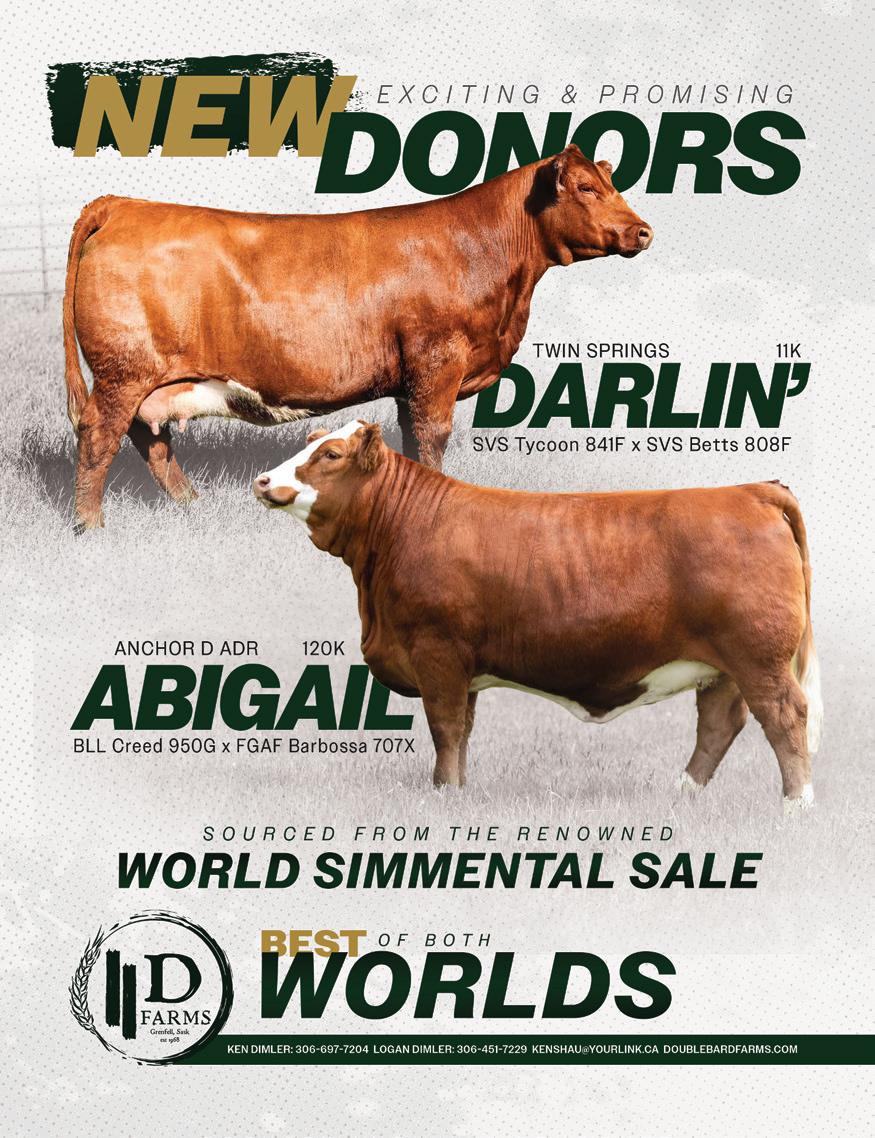
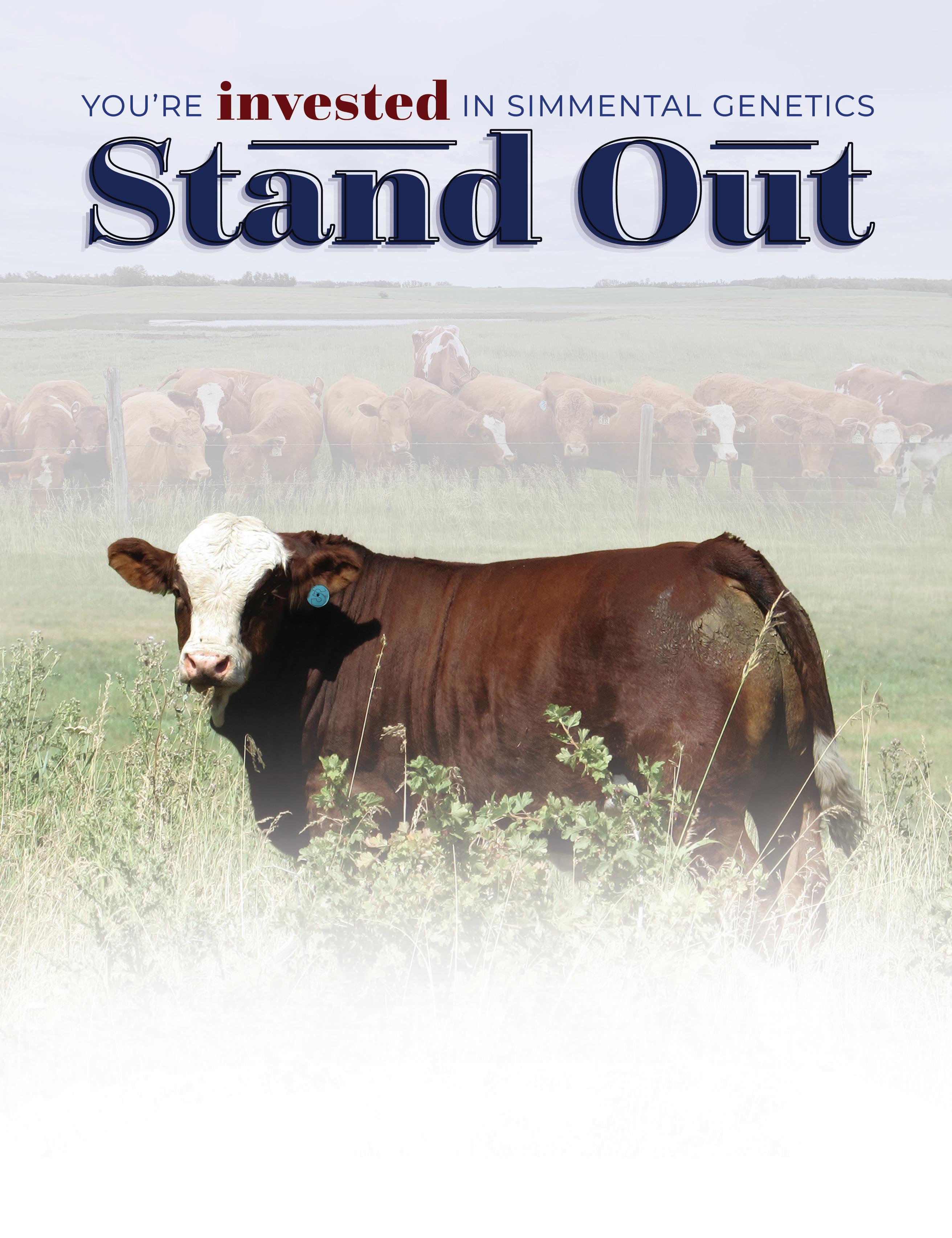
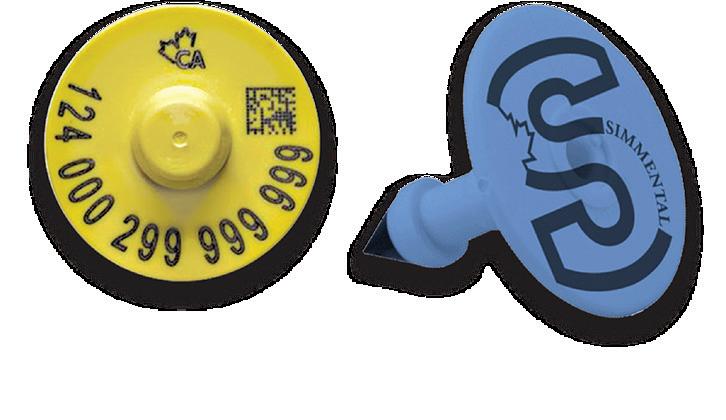

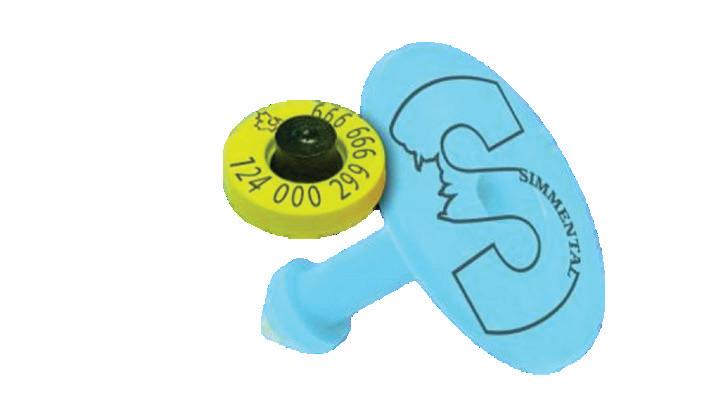
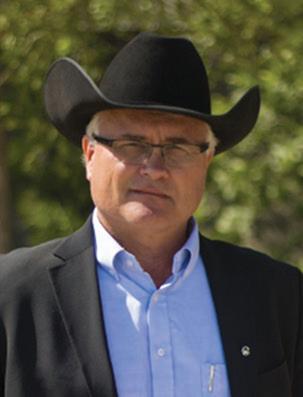
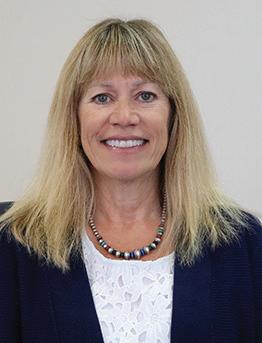
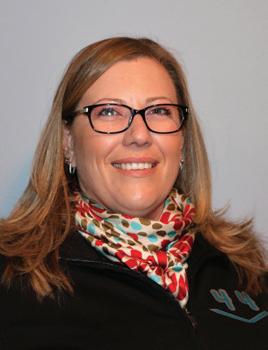
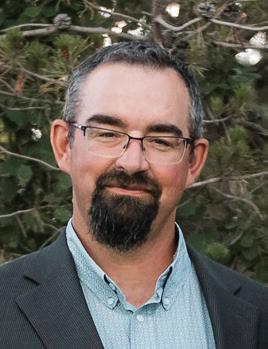
The official publication of the Canadian Simmental Association











The official publication of the Canadian Simmental Association
Canadian Simmental Country Booking & Material Deadline
October/November 2025 Issue September 7, 2025
December “Winter” 2025 Issue October 15, 2025
February “Herdsire” 2026 Issue January 1, 2026
March/April/May “Spring ” 2026 Issue April 1, 2026
“Herd Book” 2026 Issue July 1, 2026
Commercial Country
September 2025 Issue
August 1, 2025
January 2026 Issue December 1, 2025
Advertising
Simmental Country
Business Card Ad (7 issues)
Subscription Rates
Canada $40 plus applicable taxes per year $75 plus applicable taxes for two years (GST included)
USA $65 per year U.S. funds Foreign $130 per year Canadian funds
These fees are subject to the following taxes:
AB, SK, MB, QC: add 5% to all fees for GST BC: add 12% to all fees for HST ON, NB, NFLD: add 13% to all fees for HST NS: add 15% to all fees for HST VOLUME 46, NUMBER 3
Production & Ad Copy Changes
Special production requests and ad copy changes may be subject to extra charges. Charges will apply on an individual basis.
Layouts & Proofs
Requests for special layouts should be in the Simmental Country office by the 21st day of the second month preceding publication. Although every effort will be made to provide proofs on all ads, proofs are guaranteed only if all ad material arrives in the Country office prior to deadline.
Advertising Content
The Simmental Country assumes no responsibility for the accuracy and truthfulness of submitted advertising copy or electronically supplied pictures and has the right to refuse any ad copy or photos. Advertisers shall indemnify and hold harmless the Country containing pedigrees or statements regarding performance must conform to records kept by the Canadian Simmental Association. Copy deviating from official records may be changed as necessary without advertiser consent.
Editorial Policy
Articles and information in this magazine represent the opinions of the writers and the information that, to the best of our knowledge, was accurate at the time of writing. Users of any information contained in Simmental Country are encouraged to validate that information by independent means.
Canadian Simmental Association #13, 4101 19th St. N.E. Calgary, Alberta T2E 7C4 Phone: 403-250-7979 Fax: 403-250-5121 wwww.simmentalcountry.com
Publication Mail Agreement #40012794 © 2025 Simmental Country (1997) Ltd. All rights reserved. The contents of this publication may not be reproduced by any means, in whole or in part, without the prior written consent of the

Please Return Undeliverable Copies to:
Canadian Simmental Association #13 , 4101 - 19th Street N.E. Calgary, Alberta T2E 7C4 Phone: 403-250-7979
Published by Today’s Publishing Box 2330, Warman, SK S0K 4S0 Phone: 306-933-4200 www.todayspublishing.ca

Editor: Bryan Kostiuk
Marketing: Chris Poley, Ben Wright & Shane Michelson
Controller: Treena Ballantyne
Accounting: Donna Boyle
Circulation: Debbie Rhode, Kristi Knutson
Production: Jessica Engele, Katie Serhienko, Emmaline Usselman, Kylie Willms, & Kiana Salmasi
GET US YOUR BEST SEASONAL SIMMENTAL SHOTS FROM YOUR RANCH!

THE WINNERS WILL RECIEVE
IN THE OCT/NOV ISSUE OF CANADIAN SIMMENTAL COUNTRY
• Photos must be emailed to Sue Giles (sgiles@simmental.com) by August 15, 2025
• Photos must be 8.5” x 11” @ 300 DPI
• All photos submitted will become property of the Canadian Simmental Association
There will now be a separate contest just for YSCA member photo entries!
• Winning photo will be used on the front cover of the Oct/Nov issue of Simmental Country!
• All photos entered also have a chance to be on the cover of the FCSF Auction catalogue!
•Winning YSCA photo will be featured on a page in the Oct/Nov issue!


BY BRUCE HOLMQUIST General Manager, Canadian Simmental Association
The 2025 edition of the Calgary Stampede is largely in the books and congratulations to the board of directors, hundreds of volunteers, and Joel Cowley and his staff for producing another huge success. As always, the rodeo and chuckwagon races were the main attractions, however they are strongly complimented by so many cultural, education and entertainment pieces, and International auctioneer competitions. To start by mentioning more would make sure to miss some.
During my time there I was asked why Canadian Simmental remains a sponsor of the Stampede under the “Community Builders” program when there is no longer a Simmental specific open show. The last breed specific show at the Calgary Stampede was held in 2006 as part of the World Simmental Fleckvieh Federation Congress and that excitement is now captured in other ways such as a world class Jr. steer show and scholarship program. Those were complimented this year by the addition of a heifer show, which had a Simmental Champion - congratulations to Abby Rancier!
As I further explained why Simmental is a sponsor, I was able to highlight the fact that we don’t strictly see this as an opportunity to support the Calgary community, or
even Alberta in itself, rather the Canadian agricultural community. Throughout the week I had the opportunity to meet with numerous beef industry leaders, breed association representatives from Canada and the US, as well as American cattle producers who combined some herd visits along with the Calgary Stampede.
On the political side it’s not just about photo ops and some badly flipped pancakes. Numerous federal and provincial representatives were there for meetings which is a key need in this time of American trade uncertainty. American industry representatives and politicians were in attendance at several of those meetings.

Then we finished by discussing the economic impact of the event, much of it which flows to the three levels of governments and is then used to support existing and to develop new programs for agriculture and youth.
I am hopeful that major events in Victoriaville, Brandon, Toronto, Regina, Edmonton, and now that I have explained why Calgary, all remain viable venues to promote agriculture in their own and sometimes unique ways.
40+ Simmental Bred Heifers
FERME B.M.S.
BOISVERT SIMMENTAL
FERME SIBELLE FLECK SENC
ELM TREE FARMS
FERME BILODEAU DES È TOILES INC.
FERME GERARD RABY INC.
WHISKEY JACK LIVESTOCK
MUTCH FARMS
DONOVANDALE SIMMENTALS
HEMA SIMMENTAL
FERME FREDERIC LEPAGE




BY SEAN MCGRATH
Breed Improvement Coordinator for the Canadian Simmental Association
June has been an interesting month in our house. Starting with a trip to Beef Improvement Federation meetings, a wedding, a graduation and AI’ing a group of heifers, it has been a bit busy. One of the common threads through these seemingly unrelated things is that of direction. BIF talks about science and future direction for the beef industry and cattle breeding, weddings start a future direction for a new couple, and at graduation the discussion is focused on young people and their plans and direction. In the heifer context, the breeding decision made/implemented will determine the direction of their future career in a cow herd.
Just like that new graduate having a direction in their life, having a direction in a breeding program is important to success moving forward. A good quote that I try to remember is that “You can be anything, but you can’t be everything.” This is a good place to come from in terms of thinking about direction for a breeding program. Is your focus maternal, terminal, multi-purpose? All of these choices will have repercussions on your breeding program and direction.
As breeders, we need to consciously be thinking about establishing genetic potential in our seedstock that we offer, but it is also important to consider the context that those genetics will be used in. If we continually increase the EPD values of our animals, we are in fact increasing the genetic potential of our animals. The flip side of this is that we may also be increasing the input requirements of our animals and we may be marketing them into situations where they will not have access to the resources required to express that potential.
There is good evidence of this in industry as we see weaning weights remaining relatively stable over the last several years, while feedlot gains/efficiency and carcass weights have all increased dramatically. The difference between many ranches and the feedlot environment is that cattle operate on limited resources in a ranch context and have many of these restrictions removed when in a feedlot. For example, a range or pasture only produces a certain amount of forage over a given area, while a feedlot will deliver a balanced ration directly to the animals on feed.
There can be value in this enhanced genetic potential if the ranch can either increase resources to their animals to capture that genetic potential or can market the potential to a buyer (feeder) who has the resources to help the animals express that potential. This is where direction really comes into the picture. As we add genetic potential for performance into our cattle, we may face tradeoffs in areas such as reproductive efficiency, mature size and maternal ability. As breeders we have a few different choices in terms of how we approach things, but we could classify them across 3 broad categories.
All Purpose – A lot of herds want to sell feeder calves and retain their own heifers using the same bull. This basically means that bulls must be “jack of all trades” and may give up being at the very highest genetic levels for specific traits in the interest of being OK or pretty good at a lot of traits.
Maternal – Some herds will require maternally focused bulls to use strictly with the goal of producing replacement females. These sires will typically (not necessarily) be slightly lower performance genetics with higher stayability, moderate milk and reasonable calving ease numbers.
Terminal – Terminal sires will excel at growth, and yield with acceptable calving ease. All offspring are destined for slaughter and so maternal strengths such as maternal calving ease, milk, and stayability have no impact on sire selection.
As previously mentioned, there are various combinations or gradients across these categories. Individual breeding programs may fill all these markets or target a specific one. The key important point is to understand the customers’ needs and target the correct sire into a given situation. If sires are going into a situation where their offspring may not be able to express their genetic potential, are there things you can do as a breeder to help your customers market that potential into the next stage of the chain?
One of the tools available to breeders is high density DNA tests (100K). By conducting HD tests on their sale animals, it not only produces an improvement in accuracy of the EPD so we are more likely to categorize bulls correctly, but it also provides data to help commercial producers tie calves back to specific sires and genetic types which can aid their selection decisions and marketing ability. Identifying customer direction is key to providing them with the right genetics and I have heard countless stories of breeders who work to get the right genetics into situations, only to have the customer buy an animal that doesn’t fit their stated direction.
Knowing your direction and that of your customers can help you target EPD ranges or selection indexes such as API and TI that can best serve your customer base and their customers down the line. Hopefully you will have some time over the summer to think about what direction you are headed.

456G
1112J


BY ROY LEWIS, DVM
I have never looked at foot rot individually. Perhaps it is the fact the response to treatment with basic antimicrobials is very good for true foot rot. But it is probably the one disease that is very much over diagnosed when it comes to lameness and thus overtreated.
With lame cattle one has to have a very good look and diagnose the lameness lower leg or upper leg and if in the foot, is there swelling associated with the lameness. If lower leg in the foot with swelling and often a smell coming from between the toes or lots of swelling present, then it is most likely foot rot. The response to treatment is also generally a telltale sign with most foot rot being very responsive when the appropriate antibiotic is given. Often the antibiotic could be the penicillin’s tetracyclines or even macrolide antibiotics like draxxin as an example. In more modern times, the dart guns have been used on pasture and so the macrolides with a lower dosage makes such antibiotics a good choice. Foot rot is caused by a bacteria gaining access that grows without oxygen and gains entrance from a break or weakness in the skin between the toes or could also be by a penetrating wound. Again, the bacteria grow without oxygen, so mud caked, or manure caked feet sets up the ideal environment. Seen much more in the feedlot or in very wet marshy conditions at pasture. Keeping areas cleaned around watering bowls and feedlot pens cleaned will go along way to preventing foot rot. Feedlot pens with lots of manure need cleaning and I believe those using the RCC [roller compacted concrete} have way less foot problems as one of its many benefits. One of the biggest problems we as veterinarians still see is over diagnosis of foot rot. Any lame animal should not be considered foot rot. It is one area where there is likely overuse of antimicrobials. Sprains strains clear up with rest and nothing or in severe cases Nsaids. Septic arthritis or severe corns may need surgical intervention. Bad cracks or sole abscesses need foot trimming and care. Interdigital dermatitis needs another type of treatment. Treating quickly eliminates the emergency slaughter plan so check out thoroughly before jumping to treatment. Occasionally we will see the stifle injuries need rest time and may be permanent where cows or bulls are culled. Fractures may be cast splinted or higher ones emergency slaughtered if mature bulls or cows. You can see how response to treatment is a bit of a diagnostic tool. If they don’t respond to treatment for foot rot it is very likely something else.
For most common foot rot, common antimicrobials will work and in the old days removing more of the necrotic tissue exposes the area to air and the condition improves. In fact, exposing the infected area to air could be curative without antibiotics. There is however a great need to prevent this disease from occurring in our breeding bulls. The foot rot disease is mainly caused by one specific organism fusobacterium necrophorum and occasionally a couple others, but the main one is in the foot rot vaccine.
There has been a trend over the years of more and more purebred breeders having the foot rot vaccine administered prior to delivery or pick up of the bull. The purebred breeders see this as a valuable preventative measure on their breeding bulls. Having a cow, heifer or calf come down with foot rot is one thing but a breeding bull right in the middle of breeding season and having them down and lame for even a few days is very costly. Add to that the fact that bulls are much harder to catch and treat. Yes, dart guns may have made that easier and quicker but there is still the recovery time and
missed breedings by a lame bull. Breeding season is tough on a bull’s feet at the best of times especially the back feet when they mount so keeping their feet in as good a health as possible is imperative to a good breeding season. The purebred breeders get you started, and it should be listed in the sales catalogue but often it isn’t, so asking the specifics when purchasing your bull. Did the bull receive both the initial and booster shot of the vaccine with about the month to six weeks between the initial and booster shot.
To me the purebred breeders that do this are setting you up for success if you continue to maintain the booster shot yearly. The ideal time is at semen testing time the bull is caught, and it is just before breeding so an ideal time to administer the booster and get maximum protection by breeding season. Since mature bulls are harder to contain and handle the vaccine should be administered when in the process of electroejaculation when totally safe to do so. It is a low dose subcutaneous vaccine so lots of safe places it can be given. It is also a time when we are looking at the feet and legs of the bulls and can correct any other foot issues we see with a foot trim and grinding out cracks. Routine foot trims when needed definitely extend the life of our breeding bulls of that there is no doubt in my mind.
Some veterinary clinics I know carry the vaccine with them and promote its use when semen evaluating and can then charge for it on a dose-by-dose basis. It is a killed bacterin (like blackleg) and only comes in a ten-dose container. Immunity is not real long lived so I recommend on these valuable breeding bulls that are used in two breeding seasons say six months apart that you revaccinate before the start of the next breeding season.
We all know prevention is far better than treatment. I have on occasion recommended foot rot vaccine to a client that always pastured wet pastureland on lots of muskeg simply because his foot rot rate got too high. Again, response to foot rot medication is good in the feedlot but the cost of treatment labour and the fact the feedlot animal is in pain and not eating as well is reflected in less gain.
When treating one case we always think of prevention. Can a wet environment be changed should a feedlot pen be cleaned up. Also, the precaution that make sure the clinical signs, feet if there is no swelling in the foot and the toes spread apart and the foul odor it is something else. Interdigital dermatitis has been a big problem in dairies and just getting into some beef feedlots. It is the disease most similar to foot rot, but a close exam will tell you what you’re really dealing with.
Over the years there has been many lameness’s wrongly treated because a super quick diagnosis of foot rot was made. If you made this mistake, you know because there was no response to the medication. With most lameness’s except those going to slaughter veterinarians will often prescribe a NSAID for the pain and inflammation. Foot rot would be no different for sure recovery is quicker and we maintain foraging and movement for feed or water.
When treating foot rot make sure your diagnosis is right and really think of vaccination for foot rot in your breeding bulls as a possibility. It is a worthwhile investment but remember painkillers will really help in treating other lameness so have a protocol from your veterinarian on what to do in these cases as well or have them diagnosed. Lameness in cattle or many other species can be caused by many things and is one of the problems in cloven hoofed animals with most lameness involving the feet.


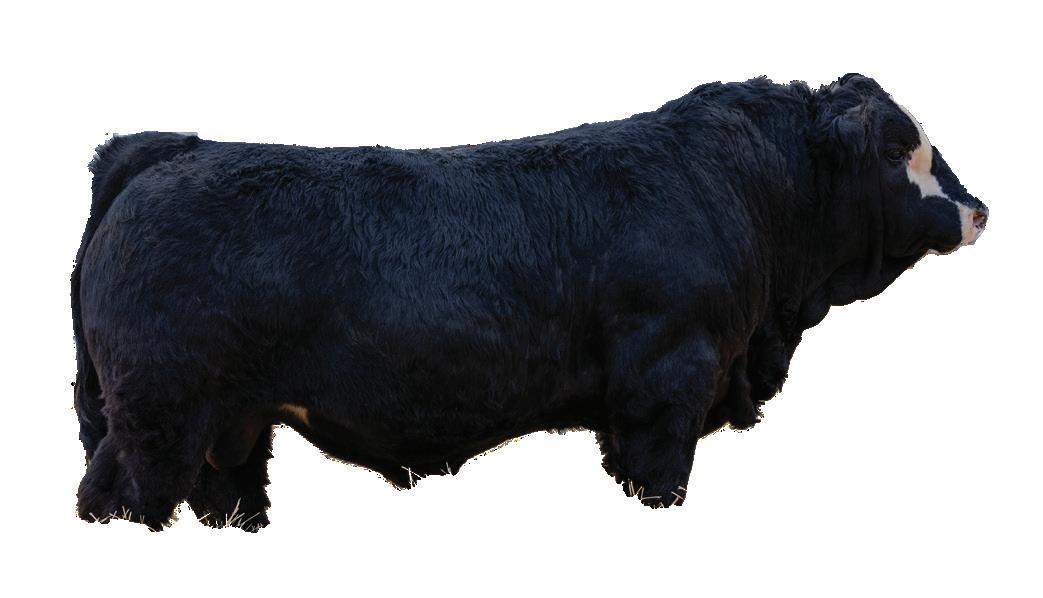











If you've been to a purebred cattle sale in Canada at some point over the past 50 years, there is a good chance somewhere along the line you've seen Dennis Ericson at work.
A fairly big guy, often wearing a sports jacket, tie and a cowboy hat, he'd be standing in the sales ring, keeping a close eye on the crowd in the bleachers. A live animal would be on show, or in more recent years be captured in a video playing on a large screen. Every so often he'd let out a yelp and gesture toward the auctioneer, and he'd repeat that several times until the animal was sold.
Ericson would be watching for offers from buyers in the crowd, as each animal was sold usually in less than a minute of often fast and furious bidding. Working along side usually two or three other ringman, he'd maintain that pace for two or three hours over the afternoon until the auction was completed. He'd stay and socialize with everyone for a while after the sale, and then jump in the car and be off to the next sale location, which may be a few miles down the road or whole province away. And then he'd repeat the process at another purebred sale the following day.

By Lee Hart
"Sometimes I'd have to travel half the night to get to the next location," he says. "In winter travelling during some blizzards, there was more than once when I arrived at the motel I'd kiss the floor, because the driving was pretty scary. But what could you do, you had to be there." Such is the life of an auction ringman.
At the peak of his career that spanned half a century, Ericson worked as many as 100 sales per year — purebred female sales during a couple months in the fall and early winter, and purebred bull sales during a couple months in late winter and early spring. As a ringman in high demand by auctioneers and purebred breeders alike, over the decades he travelled to nine provinces, criss-crossing the country many times, working thousands of sales, wracking up several hundred thousand kilometres on vehicles.
For most sales in western Canada he preferred to drive to destinations between B.C. and Manitoba, but would fly to sales in Ontario, Quebec and in Eastern Canada.
"In the early days I used to enjoy driving, but in later years not so much," says Ericson, who retired a few years ago. "I was fortunate to find someone to be my driver."
And when he wasn't on the road during the sales seasons, he joined his late wife Shelly and long-time employee and friend Boyd Monea in running a successful purebred Angus operation — Get-A-Long Stock Farm — on the Ericson home place near Wetaskiwin, AB for more than 40 years.
They sold the last of the purebred cattle in 2012, but maintained a commercial beef herd. Ericson partnered with Boyd Monea's youngest son Brett who farms near Carstairs, AB, in running a 150 head commercial cow-calf herd of Angus/ Simmental-cross cattle. The cows are calved out at Brett's farm, north of Calgary with the cow-calf pairs pastured over summer at Ericson's farm at Wetaskiwin.
While still working toward full retirement, Ericson credits growing up on the family mixed farm at Wetaskiwin, about 70 km south of Edmonton, for instilling in him a lifelong interest in the agriculture industry and his love for cattle. He says working with different classes of livestock as a kid was a great learning experience that served him well in different aspects of his lifetime careers.
"It was a pretty typical mixed farm with a little of everything," says Ericson. "We had a few Holstein dairy cattle, a few beef cattle, along with pigs and chickens. It was a great way to learn and it's where I developed my love for animals and my love for agriculture."
As a youngster, Ericson was actively involved for several years in beef and dairy 4-H programs being competitive in showmanship and grooming. His dad died when he was 10 and his mother later remarried, saying the farm would be there for Dennis when he was ready.

After high school he attended Olds College, receiving a diploma in agricultural science. He later attended Lakeland College in Vermillion, where he learned to become an artificial insemination (AI) technician.
With that certificate, he worked for two years for a breeding services company - Lacombe AI Unit - providing AI breeding services to dairy and beef producers across much of central Alberta.
"That was a valuable job in that I learned to communicate with people," says Ericson. "You weren't a good technician if you raced in and out of the farmyard. To be successful you had to learn how to converse with farmers, and hopefully you didn't run over the family dog or cat as you were coming and going."
With his daily shift with the AI company done at 3 p.m., Ericson took on part-time work with Heatherbrook Farms, owned by the Henderson family in Lacombe, AB. Over the next three years, he became the herdsman for the purebred Angus operation.
Next stop in his career took him to North Platte in west-central Nebraska in 1970, where he joined the staff of National Livestock Brokers owned by Jim Baldridge. The company was at one time the largest livestock sales management company in the United States. Ericson worked as a fieldman, helped with trucking and getting cattle organized for sales. "Mainly I went to work for the company because Jim Baldridge was a good man and I knew I could learn a few things from him," he says.
In 1973 Ericson headed back to Canada and got a job working with Transcon Livestock Corp. — a Calgary-based sales management company owned by Rodney James. "My first job with Transcon was much the same as I had with National Livestock Brokers — I helped organize sales," he says. "Then in 1975 I started working in the sales ring, became a ringman, and that's what I did for the next 50 years.”
"I was attracted to the excitement of the sales ring," he says. "I had a few friends who were auctioneers and they liked what I was doing, so I stayed with it and I got pretty good at it." Ericson says the key characteristics of a good ringman, is to be alert and fast to see the bids, be loud enough so the auctioneer can hear you, and have good people skills being able to talk to producers and earn their confidence.
Transcon specialized in managing sales for purebred Simmental and Charolais breeders "those breeds had the best market in those days and the company focused on those sales," says Ericson.
Ericson says his career as a ringman involved a great deal of travel. "I travelled a fair bit, saw a lot, and I was always on the move. You weren't there for a holiday."
A couple of years after starting his career as a sales ringman, Ericson returned to the home farm. He met Shelly at a Simmental sale in 1975, and they married in 1977. "We bought the farm from my folks in 1977 and called it ‘Get-A-Long Stock Farms’, with plans to raise purebred Angus cattle," he says. "Shelly was actually a city girl, but she was interested to learn about cattle and she got pretty good at it too. She learned how to calve cows and sell bulls." There were reports that buyers preferred to deal with Dennis when buying bulls, because Shelly was a tough negotiator. He says the farm name just reflected the reality of life. "Sometimes you get along and sometimes you don't," says Ericson, with a laugh. "But we always enjoyed working with cattle."


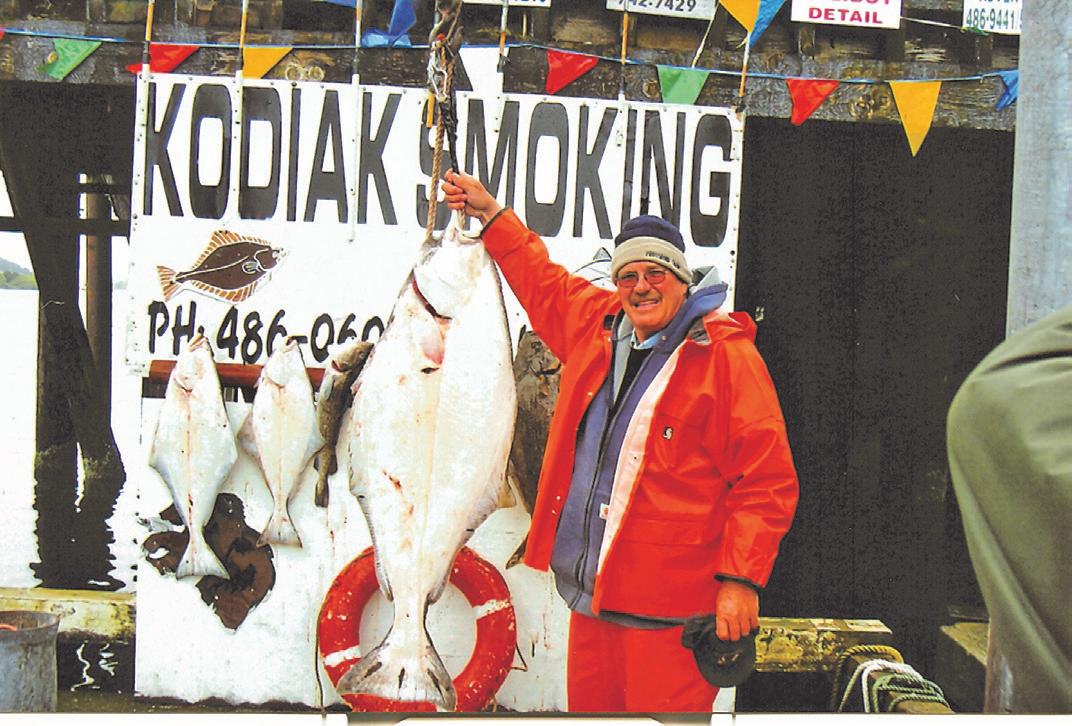
Dennis and Shelly kept building the purebred herd, raising both Red and Black Angus cattle. "Eventually we were running about 300 head of purebred cattle," says Dennis. "It would take me two days just to check pastures, and involved a lot of work, especially since I was also away working as ringman several months of the year."
Ericson says fate intervened in 1985 "when there was a knock at the door and this fella named Boyd Monea was standing there and said ‘I heard you can use some help.’ He started working on the farm and 40 years later he is still here," says Dennis. "Boyd was not only a great help, but he's been a tremendous friend as well." Monea also established his own cattle operation — Brox Stock Farms — on the west side of Westaskwin, which has been raising purebred Red Angus cattle for more than 30 years.
Get-A-Long Stock Farm was successful at producing quality cattle. "We sold a top Red Angus bull for $60,000 in 2001 while the top heifer sold for $18,000, so the cattle treated us very well," he says.
While the Ericson's enjoyed the cattle, looking after 300 head didn't allow for much down time. "We realized we spent all summer producing pasture and hay for cattle and all winter feeding the cows, so in 1995 we decided to downsize," says Dennis. They sold the 150 head Black Angus cowherd to Rick Coombs of Calgary, while GetA-Long Stock Farm retained a 150 head Red Angus herd.
They continued with purebred cattle for several more years before selling the rest of the purebred operation to Bryan and Sherry Mackenzie and Brylor Ranch at Pincher Creek, AB, in 2012.
They partnered with Brett Monea to run a 150 head commercial cowherd — Angus females crossed with Simmental bulls. "The cross between the two breeds produces excellent calves," says Ericson. They also have a niche marketing program where they cross some of the Simme/Angus females with white Shorthorn bulls to produce blue roan calves. "We have a few commercial producers looking for those blue calves. The demand has been very good."
Ericson noted there have been many changes in the cattle industry over the years, including the price of animals today. He said at one time he would sell a good commercial cow for $400 and now those good females are worth up to $5,500, and commercial calves are selling for $3,000. "It's crazy how the cattle markets have changed," he says.
Ericson retired from ringman duties a few years ago, as he dealt with some of his own health issues. He is also mourning the loss of Shelly, his wife and partner for 48 years, who passed away from cancer in early February 2025.

Ericson says he loved working the purebred livestock sales over those many years — the work was always varied and interesting, everyday was different, and for many years he enjoyed the travel. "But I think as a lot of us know, it's the people that really make the difference," he says. "I got to meet and work with so many wonderful people over the years, and I always had mentors such as Jim Baldridge in Nebraska and Rodney James at Transcon, along with many others who helped me so much during my career. And over the years, we bought many bulls from other producers as we were looking for quality animals, but often it was the producer you were dealing with that meant as much as the animal's genetics. It is people that make the difference."
Some of the special moments over the years involved being a judge at many 4-H shows and sales. "I always enjoyed being a judge and looking at some good cattle, but in particular talking to the kids," he says. "I was always pretty good at reasons, so I felt it was important to talk to the kids and explain my thoughts. It is important to be encouraging, because they work hard and hopefully they'll stick around and be the next generation in agriculture."

PAR SEAN MCGRATH
Coordonnateur des programmes d’amelioration de la race, Association Simmental du Canada

Le mois de juin a été intéressant dans notre maison. En commençant par un voyage aux réunions de la “Beef Improvement Federation-BIF”, un mariage, une remise de diplôme et l’insémination d’un groupe de génisses, on peut dire cela a été un peu occupé. L’un des fils conducteurs de ces choses apparemment sans rapport est la direction. Aux réunions de BIF, on parle de la science et de la direction future pour l’industrie du bœuf et l’élevage de bovins, les mariages commencent une direction future pour un nouveau couple, et lors de la remise des diplômes, la discussion est axée sur les jeunes et leurs plans et leur direction. Dans le cas des génisses inséminées, la décision d’élevage prise/mise en œuvre déterminera l’orientation de leur future carrière dans un troupeau de vaches. Tout comme ce nouveau diplômé ayant une direction dans sa vie, avoir une direction dans un programme d’élevage est important pour réussir à l’avenir. J’essaie de me souvenir souvent de cette citation qui dit « Tu peux être n’importe quoi, mais tu ne peux pas être tout ». C’est un bon endroit pour réfléchir à l’orientation d’un programme de sélection. Est-ce que votre focus est davantage maternel, terminal ou polyvalent ? Tous ces choix entraîneront des répercussions sur votre programme d’élevage et sa direction. En tant qu’éleveurs, nous devons consciemment penser à établir le potentiel génétique chez les sujets de race pure que nous offrons, mais il est également important de considérer le contexte dans lequel cette génétique sera utilisée. Si nous augmentons continuellement les valeurs d’EPD de nos animaux, nous augmentons en fait le potentiel génétique de nos animaux. Le revers de la médaille est que nous pourrions également augmenter les besoins en intrants de nos animaux et nous pourrions les commercialiser dans des situations où ils n’auront pas accès aux ressources nécessaires pour exprimer tout ce potentiel. Il y a de bonnes preuves de cela dans l’industrie, car nous constatons que les poids de sevrage sont restés relativement stables au cours des dernières années, tandis que les gains de poids / l’efficacité dans les parcs d’engraissement et le poids des carcasses ont tous augmenté considérablement. La différence entre de nombreuses fermes et l’environnement du parc d’engraissement est que les bovins fonctionnent sur des ressources limitées dans un contexte de la ferme et qu’un grand nombre de ces restrictions sont supprimées lorsqu’ils se trouvent dans un parc d’engraissement. Par exemple, un pâturage ne produit qu’une certaine quantité d’herbe sur une surface donnée, tandis qu’un parc d’engraissement fournira une ration équilibrée directement aux animaux alimentés. Il peut y avoir de la valeur dans ce potentiel génétique amélioré si la ferme peut soit augmenter les ressources pour ses animaux afin de capturer ce potentiel génétique, soit commercialiser le potentiel auprès d’un acheteur (engraisseur) qui a les ressources pour aider les animaux à exprimer ce potentiel.
C’est là que la direction prend vraiment toute son importance. À mesure que nous augmentons le potentiel génétique pour la performance de nos bovins, nous pouvons avoir à faire des compromis pour des caractéristiques telles que l’efficacité reproductive, la taille adulte et la capacité maternelle. En tant qu’éleveurs, nous avons quelques choix différents en termes d’approche de nos orientations, mais nous pourrions les classer dans trois grandes catégories.
Polyvalent – Beaucoup de troupeaux veulent vendre des veaux d’embouche et retenir leurs propres génisses en utilisant le même taureau. Cela signifie essentiellement que les taureaux doivent être des « taureaux à tout faire » et qu’ils peuvent ne pas être aux niveaux génétiques les plus élevés pour des caractères spécifiques dans l’intérêt d’être OK ou assez bons pour beaucoup de caractères.
Maternel – Certains troupeaux feront en sorte que les taureaux maternels soient utilisés strictement dans le but de produire des femelles de remplacement. Ces taureaux seront généralement (mais pas nécessairement) légèrement plus faibles en génétique de performance avec une longévité plus élevée, une aptitude laitière modérée et des valeurs raisonnables de facilité de vêlage.
Terminal – Les taureaux terminaux excelleront pour la croissance et le rendement avec une facilité de vêlage acceptable. Tous les descendants sont destinés à l’abattage et donc les caractères maternels tels que la facilité de vêlage, l’aptitude laitière et la longévité n’ont aucun impact sur la sélection des taureaux.
Comme mentionné précédemment, il existe diverses combinaisons ou niveaux à travers ces catégories. Les programmes d’élevage individuels peuvent fournir tous ces marchés ou bien cibler un marché spécifique. L’élément clé important est de comprendre les besoins des clients et de cibler le bon taureau dans une situation donnée. Si les taureaux se retrouvent dans une situation où leur progéniture pourrait ne pas être en mesure d’exprimer leur potentiel génétique, y a-t-il des choses que vous pouvez faire en tant qu’éleveur pour aider vos clients à transférer ce potentiel dans la prochaine étape de la chaîne ?
L’un des outils à la disposition des éleveurs est le test d’ADN de haute densité (100K). En effectuant des tests HD sur leurs animaux disponibles pour leur vente, cela ne produit pas seulement une amélioration de la précision des EPD afin que nous soyons plus susceptibles de catégoriser les taureaux correctement, mais cela fournit également des données pour aider les producteurs commerciaux à relier les veaux à des taureaux spécifiques et à des types génétiques qui peuvent aider leurs décisions de sélection et leur réussite de commercialisation.
Identifier la direction du client est essentiel pour leur fournir la bonne génétique et j’ai entendu d’innombrables histoires de sélectionneurs qui travaillent pour obtenir la bonne génétique dans des situations données, pour réaliser que le client achète un animal qui ne correspond pas à sa direction désirée.
Connaître votre direction et celle de vos clients peut vous aider à cibler des plages d’EPD ou des indices de sélection tels que les indices API et TI qui peuvent mieux servir votre clientèle et leurs clients en aval. J’espère que vous aurez un peu de temps au cours de l’été pour réfléchir à la direction que vous prenez.
BY DWAYNE MARTIN
Representative
In mid-May, the CSA had the opportunity to attend the 44th annual LMAC Convention and Annual Livestock Auctioneer Competition - an event that brings together auctioneers, auction mart owners, cattle buyers, livestock hauling companies and many other beef industry specialists.
Manitoba hosted the competition this year. The Convention and AGM along with some other activities were held in Brandon, and Heartland Livestock in Virden hosted the Auctioneer Competition.
The Livestock Markets Association of Canada was formed in 1964 with the purpose of promoting the selling of livestock through public auction. The LMAC continues to grow today and is recognized as the national voice of the livestock marketing sector in Canada.
The LMAC having a seat at the table with many federal and provincial boards, including being a voting member with the Canadian Cattlemen‘s Association makes the LMAC a vital part of the beef industry. This gives a boots on the ground, real-world perspective to many policies that are being proposed or implemented at federal and provincial levels.
The 26th Annual Canadian Livestock Auctioneer Championship was held at Virden’s own Heartland livestock. Heartland management and staff did a bang-up job putting together a solid assortment of around 5100 head of cattle to put through the ring. The Heartland staff did an outstanding job keeping cattle in front of the 39 contestants with many comments being made that their ring and clerk staff may have been as good as many have seen.
With the strong market, the competition was truly something to witness with the mantra of “true price discovery” being more evident than ever. $16.8 million of cattle went through the ring that day. The atmosphere in the building ramped up as the day went and with every new set of feeder calves that would come through, the common phrase was “Did you ever think you’d see the day?”.
The Canadian Simmental Association is one of the Competition’s Legacy Sponsors, providing a top five buckle for the last 26 years. Along with four other breed associations, the sponsorship is rotated among the top five competitors. This year the CSA sponsored the 2nd runner-up buckle that went to Kirk Goldsmith representing the VJV marketing group. The 2025 Canadian Champion Auctioneer Is Casey Lawes representing Provost Livestock Exchange.
The mutual respect between young and old is honorable, and this is evident with there being multiple memorial honour roll recipients every year, along with a Hall of Fame inductee as well, giving tribute to those that built this industry to what it is today. This year’s recipients was Jim Abel of Stettler Auction Mart.
The LMAC convention is a great opportunity for the next generation of leaders in the livestock industry to build connections and get advice from those that have guided the industry to where it is today. The camaraderie in the room is truly something to see.






BY TYLER FULTON Canadian Cattle Association President
If you’re lucky enough to be a full-time farmer or rancher, summer can be one of the best times of year. I appreciate the long days and long nights and countless opportunities to take advantage of heat and sunshine. Blue skies and green pastures provide some of the best opportunities for photos and videos that showcase our cattle and our farm and ranch operations.
Summer also brings additional challenges such as wildfire smoke, tornadoes, hail, extreme heat and the risk of evacuation. Producers across Canada have faced these challenges since May. And while the end of summer may be near, we still need to be mindful of the potential risk and the need to be prepared.
CCA’s chief veterinary officer Dr. Leigh Rosengren says that prolonged wildfire smoke exposure may cause respiratory irritation, inflammation and negatively impact cattle health and production. It is important to remember that cattle can be impacted just as much as humans by prolonged exposure to smoke. If your region is impacted by wildfire smoke, monitor your animals closely and contact your veterinarian if you have any concerns.
If you do not already have an emergency preparedness plan for your farm or ranch operation, it is never too late to create one. The Government of Canada, Canadian Agricultural Safety Association and most provinces have guidelines and templates to help you easily create a comprehensive plan that includes scenarios such as sheltering in place and evacuation. You should also have a farm/ranch emergency kit to ensure you can take care of people and animals. Being proactive and prepared makes emergency situations such as wildfires and severe weather easier to manage.
We are looking forward to Parliament resuming for the fall session. The spring session was short and resulted in a big disappointment along with some good opportunities for the Canadian beef industry.
The fast-tracked process of passing Bill C-202 was very frustrating. CCA invested significant resources campaigning against the previous iteration of the bill, Bill C-282. Bill C-202 was exactly the same, and we let Members of Parliament and the Senate know that we view this bill as bad trade policy that pits Canadian agricultural sectors against each other. Unfortunately, it’s not possible for all advocates to

achieve the outcome that they want every time. CCA did not publicly share every phone call, letter or meeting about Bill C-202, but I am confident that CCA did everything that we could to try and stop this harmful legislation.
Despite the disappointment, I remain positive. CCA’s commitment to advocacy and good relationships help to secure CCA an invitation to participate in important conversations. It is a significant privilege and responsibility to be asked what support Canadian cattle producers need from the federal government and to be invited to share our opinion and to provide input on policy matters.
At the time I write this message, we are still waiting for details about how Bill C-5 will impact our industry. We have heard public commitments to removing barriers, but fine details are still being worked out.
CCA was very pleased this spring when the Government of Canada announced Public Services and Procurement Canada, on behalf of the Canadian Food Inspection Agency, awarded contracts to Boehringer Ingelheim Animal Health and Biogénesis Bagó SA to supply multiple types of vaccine products and develop Canada’s first foot-and-mouth disease (FMD) vaccine bank. The creation of a dedicated FMD vaccine bank will build on existing protections for the livestock industry and equip producers with another tool to control and eliminate the disease should an outbreak occur. CCA has long advocated for this vital tool. We will continue to work with governments and stakeholders to ensure Canada has a robust emergency preparedness and prevention strategy against FMD.
I also want to share a big CCA staff accomplishment. Executive Vice President Dennis Laycraft recently celebrated his 35th work anniversary with CCA. On the eve of this milestone, he was inducted into the Canadian Agricultural Hall of Fame in recognition of his many years of leadership to the Canadian beef industry. We are proud that Dennis has been recognized for his many accomplishments and look forward to celebrating him at our semi-annual meeting in September in Levis, Quebec.



With her family by her side, at the Queen Elizabeth Hospital, on Wednesday, July 16, 2025 of Deborah Ann Sanderson of York Point, age 65 years.
Dear daughter of Keir and Irma (dec.) Ford. Beloved wife of 33 years to Randy Sanderson. Loving mother of Tricia (Shane Mooney), Jaclyn (Rob Miller), Dereck (Adrianna Groshko), Lee Taylor (Leanne Voutour) and Brodie Taylor. Proud Grammie of Sophia Sanderson, Sadie Miller and Jonah Taylor. Debbie was the loving sister of Alan Ford (Shirley), Dwight Ford and Nevin Ford (Nicole). She will always be loved and remembered by her many sisters-in-law, brothers-in-law, nieces and nephews.
Following a miraculous double lung transplant, we were blessed to have Debbie in our lives for another 13 years.
In addition to her mother, Debbie was predeceased by her brother Brian Ford and her parents-in-law; John and Marie Sanderson.
It is with profound and heartfelt sorrow that we announce the passing of Douglas Randy Ward on May 9th, 2025. Born January 25th, 1947, Randy touched the hearts of so many with his kindness, wisdom, and unwavering spirit. Preceded by his parents Larry and Joy Ward and his brother Larry, Randy was a beloved friend, family member, entrepreneur and philanthropist whose legacy will live on in the countless lives he inspired. His compassion and dedication to those around him were unmatched, leaving an indelible mark that will not be forgotten.
Randy is survived by his loving wife Marilyn, sons Jeff & Andrew (Allison) and his four grandchildren- Kalen & Keira (Jeff), Declan & Liam (Andrew), Brother and Sister in-law Peter & Nita Burdon, Judith Paquet along with numerous nephews, nieces and cousins.
After hockey, Randy was equally passionate about his business and his farming operation. A gifted cattleman, Randy loved to spend time outdoors hunting and fishing all over North America yet somehow found the time to pursue his greatest pursuit, the game of golf, of which he held a course record and holes-in-one too numerous to count.
DO YOU HAVE AN ANNOUNCEMENT TO SHARE?
Sharing your news in Canadian Simmental Country is easy! Simply email your announcements and accompanying photos to: sgiles@simmental.com

Proud parents Scott & Paige Warner welcomed Stetson Warner on June 27, 2025

March 30, 1984 - July 17, 2025
On Thursday, July 17, 2025 Winston Ford of Wainwright, Alberta passed away suddenly at the age of 41 years.
Winston is survived by his fiancé, Megan Miller and her two children, Rowan and Griffin; parents, Stan & Esther Ford of Irma, Alberta; four siblings, Francis (Natalie) Ford and their children Abigail and Evan of Red Deer, Alberta, Emily (Josh Mountain) Ford of Vermilion, Alberta, Laython (Kayley) Ford and their children Lennon, Remi, Piper and Reid of Irma, Nelson (Lauren) Ford of Wainwright; special aunt, Edie Ford; as well as numerous aunts, uncles, cousins and friends. He was predeceased by an infant brother Gabriel and his uncle Wally.

https://www.simmental.com/ycsaevents.html


AUG 6-10
DAWSON CREEK EXHIBITION DAWSON CREEK, BC AOE POINTS SHOW
AUG 15 – 17
NORTH PEACE FALL FAIR NORTH PINE, BC
AUG 16-30
PACIFIC NATIONAL EXHIBITION VANCOUVER, BC
AUG 27-31
ARMSTRONG IPE & STAMPEDE ARMSTRONG, BC AOE POINTS SHOW
SEPT 19-22
BC AGRICULTURAL EXPO BARRIERE, BC
OCT 16-19
FRASER VALLEY JUNIOR SHOWDOWN ABBOTSFORD, BC

BARRHEAD BEEF BASH
September 27, 2025 at Barrhead Agricultural Society, Barrhead, Alberta
OLDS FALL CLASSIC
October 3 - 5, 2025 at the Megadome, Olds, Alberta
LLOYDMINSTER STOCKADE ROUND-UP
October 28 - 31, 2025 at the Lloydminster Agricultural Exhibition Association, Lloydminster, Saskatchewan
FARMFAIR INTERNATIONAL
November 5-8, 2025 at the Edmonton EXPO Centre, Edmonton, Alberta
ASA NEWSLETTER: www.albertasimmental. com/newsletter
FACEBOOK: Alberta Simmental Association

www.sasksimmental.com

Thanks to everyone that came out and supported the YCSA National CLassic, CSA Annual Convention and the SSA Annual General Meeting July 24-27th in Weyburn, SK. Watch Facebook and www.sasksimmental.com for full results! Be sure to join us at these summer & fall shows...
~ Perdue Cattle Show ~ ~ Prince Albert Exhibition ~ ~ Lloydminster Stockade Roundup ~ ~ Yorkton Harvest Showdown ~ ~ Canadian Western Agribition ~






THANK YOU TO OUR SPONSORS
Bovigen, Bow Valley Genetics, MasterFeeds Bullseye, Trouw Nutrition, Real Industry, New Rosedale Feeds, Bohrson Marketing, Lakeview Insurance, ARK New Tech, Killarney Auction Mart, Embryo Genetics Ltd., Trancon Livestock T Bar C Cattle Co., Mound Farm Supply, Rich Mc Farms & M.R Richards Vetreniary Ltd.
October 29-November 1 Manitoba Ag Ex November 1 Cherry Creek Farms Online Bull & Female Sale
November 7 Rainbow River Simmentals Online Sale
November 20 Pembina Triangle Simmental 45th Annual Sale
November 27 The Associate Invitational
December 2 Keystone Konnection 47th Annual Sale
December 4 Maple Lake Stock Farms Fall Bred Heifer Sale
December 7 Northern Light Simmentals Bred Heifer & 2 Year-Old Bull Sale
December 9 Cream of the Crop Simmental Female Sale
December 10 Premium Picks Simmental Female Sale
December 12
Bred For Success 2nd Female Event
December 13 Transcon’s Season Wrap-Up Bull & Female Sale
Production

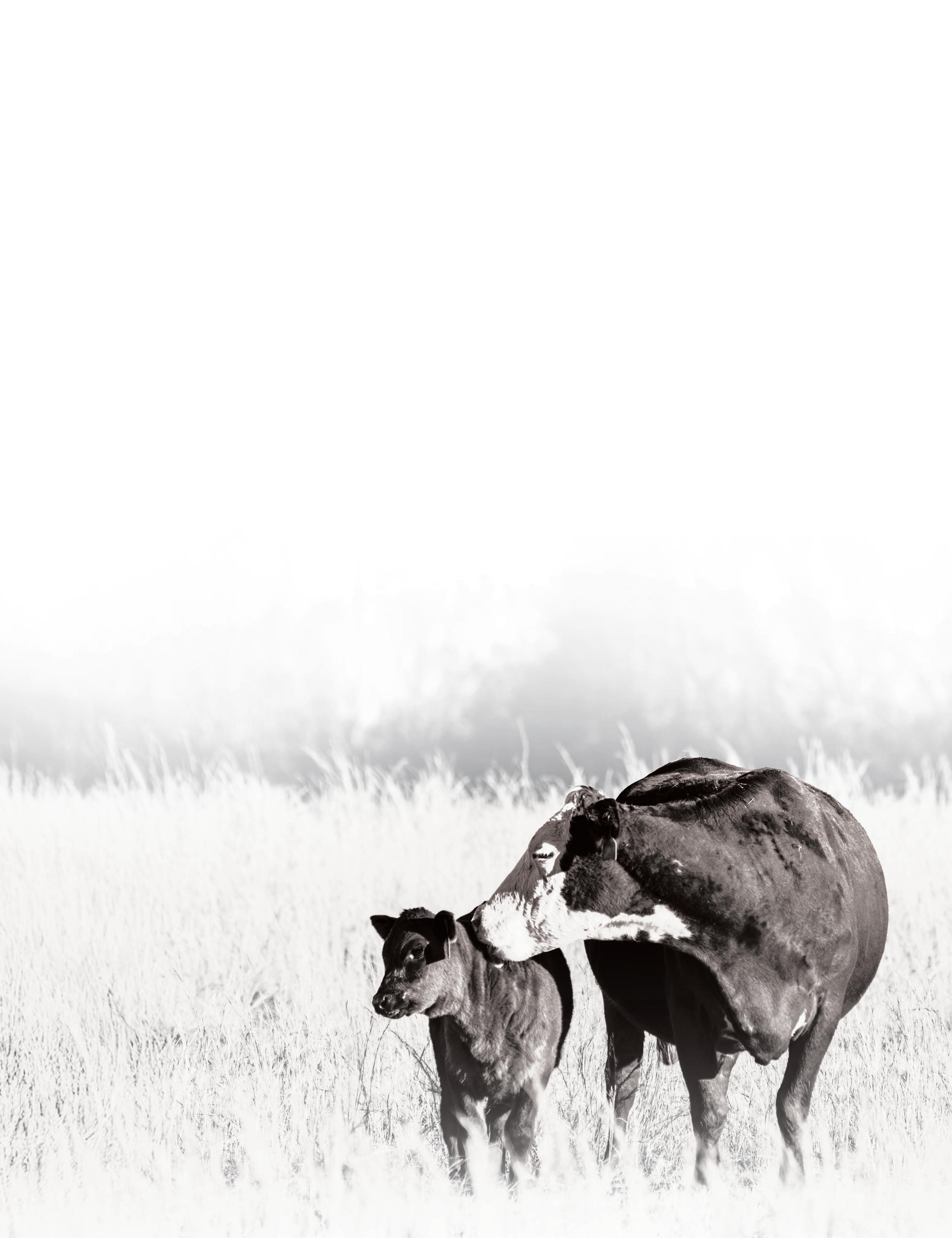

Ontario Autumn Simmental Classic - September 13, Hanover, ON
Ontario Simmental Solution Sale - October 4, Staffa, ON
Futures One Simmental Sale - October 4, Staffa, ON
IRCC Quality Control IX Female Sale - October 5, Indian River, ON
Koyle/Stewart/Miller 3rd Annual Online Sale - October 6, Iona Station, ON
Stars of the Valley Simmental Sale - October 18, Metcalfe, ON
RPCC & Guests Fall Gala Sale - October 19, Glencoe, ON
Leahy Livestock Select Bull & Female Sale - October 26, Indian River, ON
Dudgeon Cattle Co & Guests Top Cut Bred Heifer Sale - November 1, Hanover, ON
Premier & Guests Falls View Production Sale - December 30, Toronto, ON
Check out these sales for your next Simmental or Simmental Influenced female. Remember purchasing a registered Simmental from an OSA member enters you into a draw for one of 6 chances of winning $500!




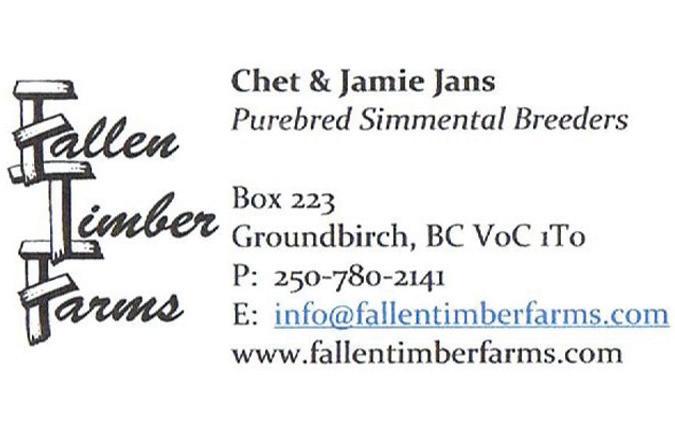






















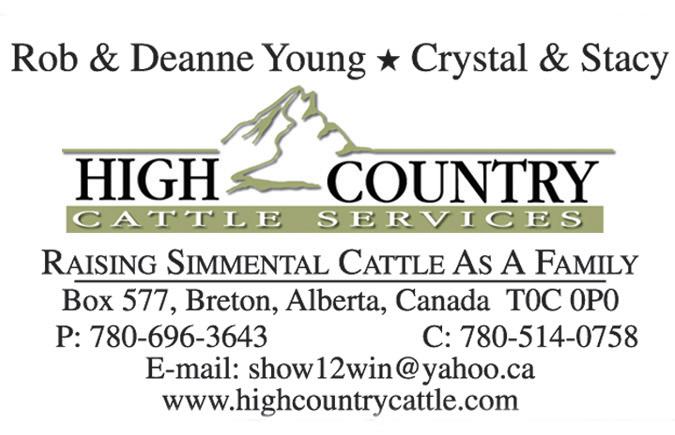







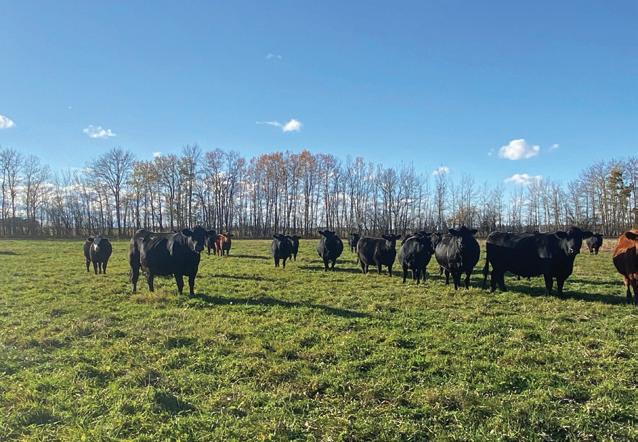
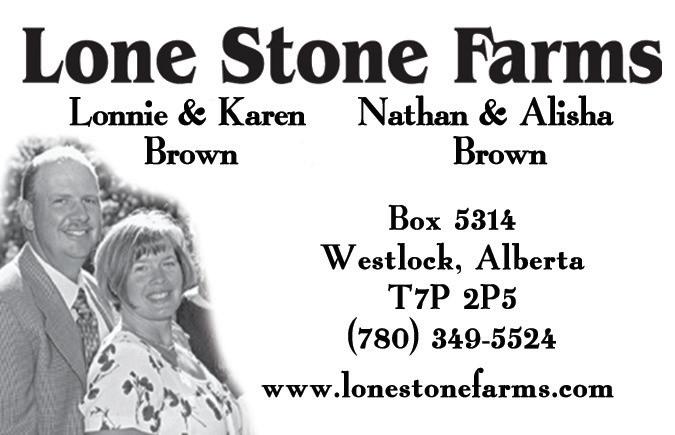

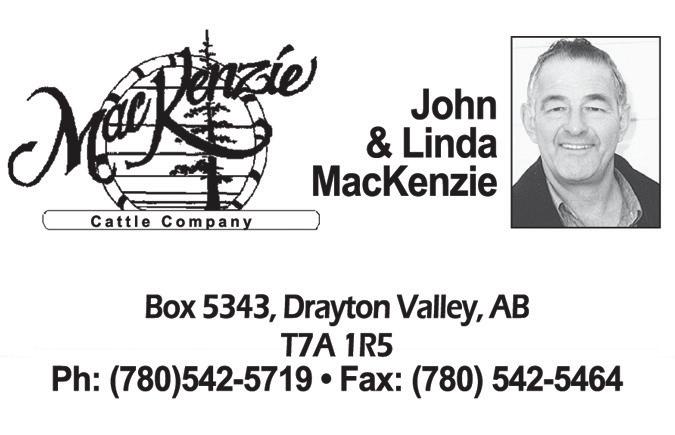



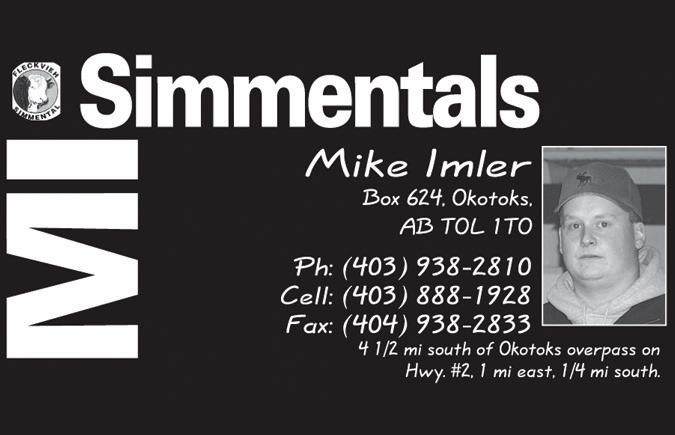









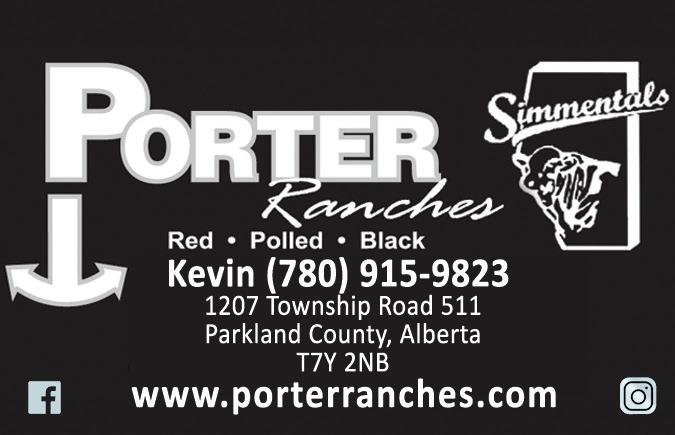
















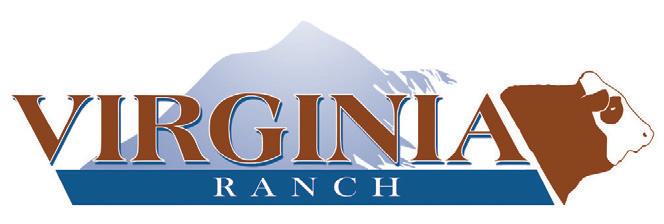







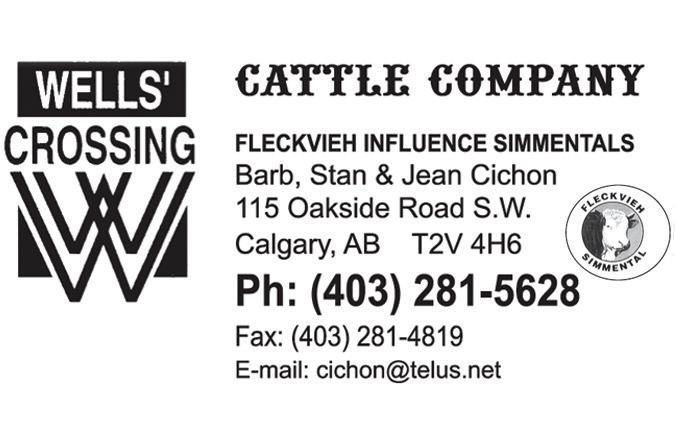




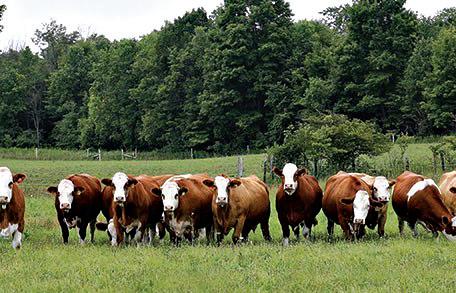















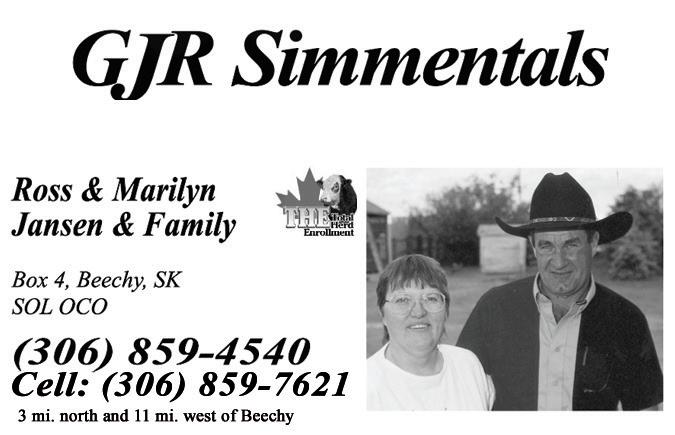



www.labattesimmentals.com labatte.simm@sasktel.net
Ph: (306)969-4820 Cell: (306) 815-7900





























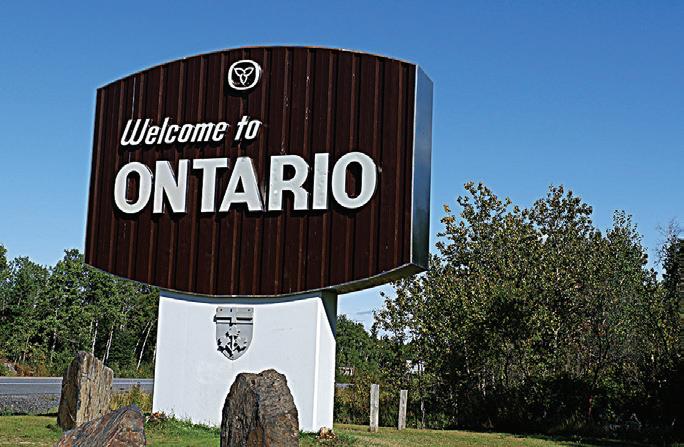









































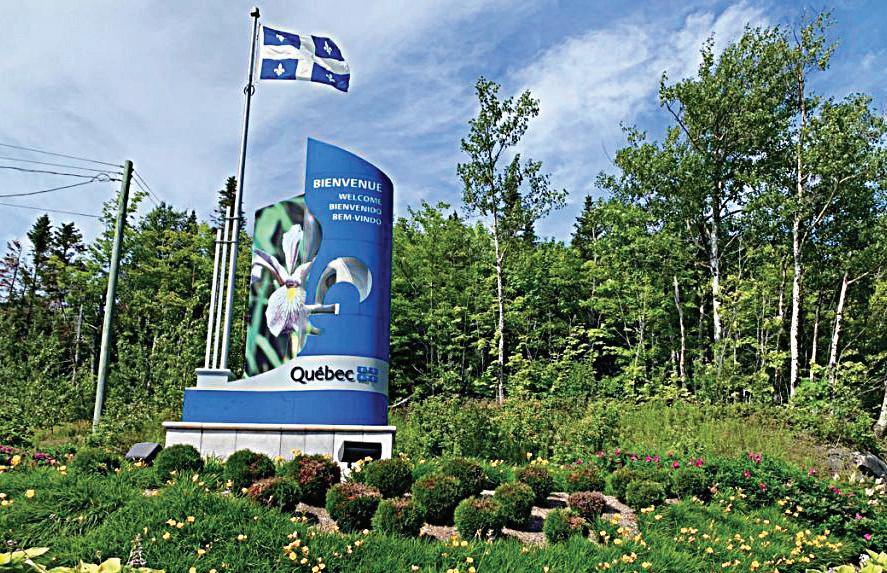

























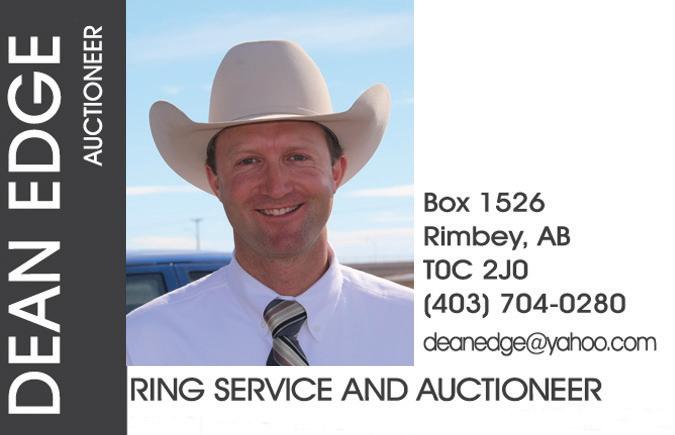






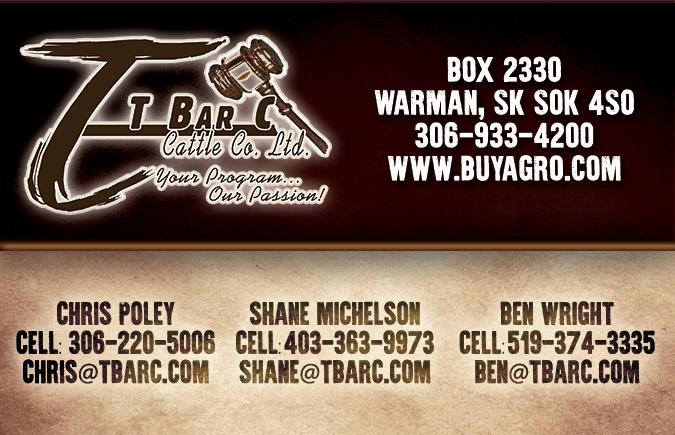















CSA EXECUTIVE
President
Randy Noble Lloydminster, AB P: (306) 821-0113 randyjoenoble@gmail.com
First Vice-President
Ben Farrant Lousana, AB P: 403-896-4331 redtopagventures@gmail.com
Second Vice-President
Barclay Smith Cherhill, AB P: (780) 305-6716 barclay.sibl@hotmail.com
CSA DIRECTORS
Kyle Lewis
Spruce Grove, AB P: (780) 220-9188 kyle@lewisfarms.ca
Blair McIntosh
Maymont, SK C: (306) 441-7755 mcintoshlivestock@hotmail.com
Neil Carson Rossburn, MB, C: (204) 859-0105 neilcarson1973@gmail.com
Scott Matthews Cookshire-Eaton, QC C: (819) 993-5187 scottmatthews01@gmail.com
Leanna Mitchell Barriere, BC P: 250-318-5245 leannaflcc@outlook.com
Blair Williamson
Lambton Shores, ON C: 519-808-0516 ridgeviewcattleco@gmail.com
Jennie Mutch Vernon, PEI C: (902) 388-1613 jenniemutch@gmail.com
PROVINCIAL ASSOCIATIONS
British Columbia Chet Jans President Groundbirch, BC 250-780-2141 chet@fallentimberfarms.com
Secretary: Leanna Mitchell Barrier, BC 250-318-5245 simmentalbc@gmail.com
Alberta President Reese Maxwell
Viking, AB P: (780) 385-5394 maxwellreece96@gmail.com
Secretary: Katie Deeg P: (403) 899-2291 albertasimmental@gmail.com
Saskatchewan
President
Blaine Barnett Moose Jaw, SK C: (306) 631-6618 cityviewsimmentals@sasktel.net
Secretary: Carolyn McCormack P: (306) 697-2945 sasksimmental@yourlink.ca
Manitoba President Brooke Canart McAuley, MB P: (204) 851-2531 brookecanart@gmail.com
Secretary: Sandra Brigden Minnedosa MB P: (403) 638-7741 sandra.mbsimmental@gmail.com
Ontario President Dylan Foley Kanata, ON 613-913-9423 foleysimmentals@gmail.com
Member Services Manager: memberservices.osa@gmail.com
Quebec
President - Pat Sullivan Kazabazua, QC 819-334-2409 pjslivestock@hotmail.ca
Secretary: Amanda Kirby Sawyerville, QC 819-889-3260 mlynnkirby99@gmail.com
Maritimes
President Patrick Milner Fenwick, NS P: (902) 694-3122 patrickmilnercattle@hotmail.com
Secretary: Ella Lentz Mount Uniacke, NS P: (902) 790-6823 ellalentz97@gmail.com
CSA STAFF
General Manager
Bruce Holmquist C: (639) 314-4613 bholmquist@simmental.com
Office Manager
Barb Judd P: (403) 250-7979 bjudd@simmental.com
Programs Coordinator
Sue Giles P: (403) 793-0409 sgiles@simmental.com
Processing Department & Member Services
Perry Welygan pwelygan@simmental.com
Laurie Macdonald lmacdonald@simmental.com
Receptionist & Member Services
Devra Leavitt dleavitt@simmental.com
Administrative Assistant
Laura Shuttleworth lshuttleworth@simmental.com
YCSA Coordinator
Jennifer Scott 902-968-1285
ycsacoordinator@simmental.com
Simmental Country Field Representative
Dwayne Martin
780-940-3510
dmartin@simmental.com
Aug 6– 9
Prince Albert Exhibition
Prince Albert, SK
Aug 6– 10 Dawson Creek Exhibition Dawson Creek, BC
Aug 9 Manitoba Field Day & AGM Pilot Mound, MB
Aug 9 The QSA Annual Picnic Bristol, QC
Aug 15-17 North Peace Fall Fair North Pine, BC
Aug 16-30 Pacific National Exhibition Vancouver, BC
Aug 27 – 31 Armstrong IPE & Stampede Armstrong, BC
Aug 28 – Sept 1 Shawville Fair Shawville, QC
Sept 2 Canadian Sires September Online Semen Sale
DLMS.ca FarmGate Timed
Sept 13 23rd Annual Ontario Autum Simmintal Classic Hanover, ON
Sept 18-21 Classic Heritage Beef Show Windsor, NS
Sept 19-22 BC Agricultural Expo Barriere, BC
Sept 20 Classic Heritage Beef Show Windsor, NS
Sept 20 Source for Success XXIV Sale Indian River, ON
Sept 25 – 28 Carpe Fair Carpe, ON
Sept 25 Ultra Livestock Production Sale Carstairs, AB
Sept 27 Ferme Gagnon & Guests 28th Annual Simmental Production Sale Cheneville, QC
Sept 27 Barrhead Beef Bash Barrhead, AB
Sept 28 Eastern Harvest 11th Annual Female Sale
Sainte-Sophie-de Lévrard, QC
Oct 3-5 Olds Fall Classic Staffa, ON
Oct 4 Ontario Simmental Solution 8th Annual Sale Staffa, ON
Oct 4 Futures One Simmental Sale:: Edition 16 Staffa, ON
Oct 4 Select Female Sale Shawinigan, QC
Oct 5 IRCC “Quality Control IX” Female Sale Indian River, ON
Oct 6
Oct 7
Oct 9
Oct 10
Oct 11
Oct 11
Oct 14
Oct 16
Oct 18
Oct 16 – 19
Oct 16-19
Oct 19
Oct 19
Oct 20
Oct 25
Oct 25
Oct 26
Oct 26
Oct 28 – 31
Koyle/Stewart/Miller 3rd Annual Online Sale
DLMS.ca FarmGate Timed
Canadian Sires October Online Semen Sale
DLMS.ca FarmGate Timed
The Evolution: Volume V Lloydminster, SK
Anchor D “Pasture Treasures“ Females Sale Rimbey, AB
Expo Boeuf - National Simmental Show Victoriaville, QC
Shades of Fall 2nd Annual Simmental Female Sale
Bentley, AB
Highwoods Family Affair Sale
DLMS.ca FarmGate Timed
Mader Ranches Ladies Night 2025 Edition Carstairs, AB
Stars of the Valley Simmental Sale
Metcalfe, ON
NB Beef Expo
Sussex, NB
Fraser Valley Junior Showdown
Abbotsford, BC
RPCC & Guests “Fall Gala“ 9th rodduction Sale
Glencoe, ON
Raising The Bar Calumet Island, QC
Gilchrist Genetics Gems Female Sale
DLMS.ca FarmGate Timed
Quebec Elite Sale Shefford, QC
Triangle Stock Farm “Keepin It Simple” Simmental Female Sale
DLMS.ca FarmGate Timed
Leahy Livestock Select Bull & Female Sale Featuring Guest M&L Cattle Co. Indian River, ON
Sane Female Sale
Saint-Cesaire, QC
Lloyd Stockade Roundup
Lloydminster, SK
Oct 29 - Nov 1 Manitoba Ag Ex Brandon, MB
Nov 1
Nov 1
Nov 4
Nov 5 – 8
Nov 5 – 8
Dudgeon Cattle Co. & Guest Top Cut Bred Heifer Sale
Hanover, ON
Cherry Creek Farms Online Bulls & Female Sale
DLMS.ca FarmGate Timed
Canadian Sires November Online Semen Sale
DLMS.ca FarmGate Timed
Farmfair International Edmonton, AB
Yorkton Harvest Showdown Yorkton, SK
Nov 7 – 16
Royal Winter Fair
Toronto, ON
Nov 13 W Sunrise Angus & Simmintal Production Sale Olds, AB
Nov 15
Transcon’s Western Harvest 12th Annual Simmental Female Sale Didsbury, AB
Nov 15 Six Mile Rancch “Genetic Focus 2025“ Sale Fir Mountain, SK
Nov 20
Nov 21
Pembina Triangle Simmental Association 45th Annual Sale Cypress River, MB
Ladies of the Peace 4th Annual Female Sale Grand Prairie, AB
Nov 22 KSL Simmental Production Sale Beaverlodge, AB
Nov 27 The Associate Invitational DLMS.ca FarmGate Timed
Nov 28 Lone Stone Farms Invitational Female Sale Westlock, AB
Nov 24 – 29 Canadian Western Agribition Regina, SK
Dec 2 Canadian Sires December Online Semen Sale DLMS.ca FarmGate Timed
Dec 2 Keystone Konnection 47th Annual Simmental Sale Brandon, MB
Dec 3 Country Classic Sale Viking, AB
Dec 4 Lewis Farms Leading Ladies Female Sale Spruce Grove, AB
Dec 4 Maple Lake Stock Farms Fall Bred Heifer Sale DLMS.ca

Canada 2ND Class Mailing
Cheque or Visa/MC
$40.00 plus tax - one year
$75.00 plus tax - two years
Farm Name:
Dec 5
Dec 7
SimPower 10th Annual Female Sale
Olds, AB
Northern Light Simmentals Bred Heifer & 2 year-old Bull Sale
Rossburn, MB
Dec 8 Up The Ante Online Female Sale
Dec 9
Dec 10
Dec 11
DLMS.ca GateFarms Timed
Cream of the Crop Simmental Female Sale
DLMS.ca GateFarms Timed
Premium Picks Simmintal Female Sale
Kenton, MB
Transcon Simsational 48th Annual Simmental Sale
Moose Jaw, SK
Dec 12 OPT Bred For Success 2nd Female Event
Dec 13
Dec 14
Dec 15
Dec 16
Dec 20
Dec 20
Dec 20 - 22
Dec 30
Darlingford, MB
Transcon’s Season Wrap-Up Simmental Bull & Female Sale
Neepawa, MB
Bonchuk Farms Female Production Sale McAuley, MB
Opportunity Knocks Sale 6.0 Lanigan, SK
Southern Alberta Simmental Round Up 32nd Annual Bull & Female Sale Stavely, AB
Transcon’s Fleckvieh Equation Fullblood Simmental Sale Red Deer, AB
Transcon’s Ultimate Red & Black XXVIII Simmental Sale Red Deer, AB
Transcon’s National Trust - On Ice Sale Online
Premier & Guests Falls View Production Sale
Toronto, ON
Simmental Country is the official publication of the Canadian Simmental Association. We endeavor to bring you up-to-date information and articles that are of interest to both the purebred and commercial cattlemen.
U.S 1ST Class Mailing
Cheque or Visa/MC (US Funds)
$65.00 - one year
PLEASE CHECK ONE OF THE ABOVE
Foreign 1ST Class Mailing
Visa/MC only (US Funds)
$130.00 plus tax - one year
To purchase your subscription, please forward payment to #13 - 4101 - 19th St. NE Calgary, Alberta Canada T2E 7C4 Fax/Email your Visa/MC number, expiry date and CVV. Cheques payable to the Canadian Simmental Association.




Sunday, September 28, 2025
Eastern Harvest 11th Annual Female Sale
Sainte-Sophie-de Lévrard, PQ
Saturday, October 11, 2025
Shades of Fall - 2nd Annual Simmental Female Sale Bentley, AB
Saturday, November 15, 2025
Transcon’s Western Harvest 12th Annual Simmental Female Sale NEW DATE & LOCATION - Didsbury, AB
Friday, November 28, 2025
Lone Stone Farms Invitational Female Sale Westlock, AB
Tuesday, December 2, 2025
Keystone Konnection 47th Annual Simmental Sale Brandon, MB
Thursday, December 11, 2025
Transcon’s Simmsational 48th Annual Simmental Sale Moose Jaw, SK
Sunday, December 13, 2025
Transcon’s Season Wrap Up Bull & Female Sale Neepawa, MB
Tuesday, December 16, 2025
Southern Alberta Simmental Round-Up 32nd Annual Bull & Female Sale Stavely, AB
Saturday, December 20, 2025
Transcon’s Fleckvieh Equation Fullblood Simmental Sale
Transcon’s Ultimate Red & Black XXVIII Simmental Sale
Transcon’s White Gold Charolais Sale Red Deer, AB
Monday, December 20-22, 2025
Transcon’s National Trust - On Ice Sale - Online


